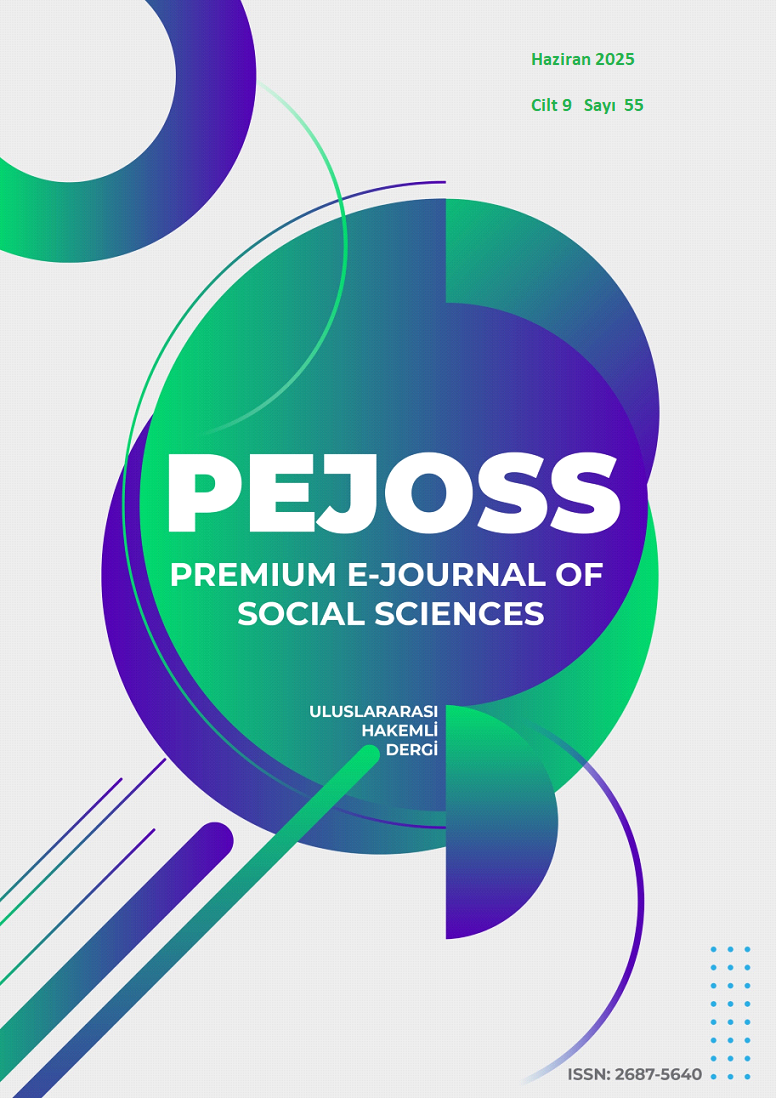Analysis of the Relationship between Cruise Passenger Transport and Tourism Revenues
DOI:
https://doi.org/10.5281/zenodo.15807695Abstract
The aim of this study is to analyse the relationship between cruise passenger transport and tourism revenues. In this context, the relationships between the dependent and independent variables of the research have been analysed by using the data on the number of passengers and tourism revenues between 2004 and 2023 by making use of the statistics data of the Ministry of Culture and Tourism (https://yigm.ktb.gov.tr). As a result of the analyses made in this context; it has been determined that cruise passenger transportation has a statistically positive effect on tourism revenues.
Downloads
References
Bayazıt, Ş. (2015). Kruvaziyer pazarı ve destinasyonlarının analizi: Türk yolcuları ve kruvaziyer limanları hakkında ampirik bir çalışma. [Yayımlanmamış Yüksek Lisans Tezi]. (398078), Fen Bilimleri Enstitüsü, İstanbul Üniversitesi.
Bircan, K. (2014). Kruvaziyer yolcu taşımacılığı kapsamında kruvaziyer limanların etkinliğinin değerlendirilmesi: Alternatif liman önerisi. [Doktora Tezi]. (353828), Sosyal Bilimler Enstitüsü, Adnan Menderes Üniversitesi, Aydın.
Buldaç, M. (2024). Art Deco-Streamline Moderne Combination in Design: An Analysis of the Floating Space SS Normandie From the Outside to the Inside. Journal of Architectural Sciences and Applications, 9(2), 1078-1094.
Büyükipekçi, S. & Gök, B. (2015). Akdeniz çanağındaki kruvaziyer turizm rakiplerinden Türkiye ve Yunanistan’ın liman vergilendirmelerinin karşılaştırılması, Selçuk Üniversitesi, Sosyal Bilimler Meslek Yüksekokulu Dergisi, 18(2), 21-40.
Ćorluka, G., Peronja, I. & Tubić, D. (2020). Cruise port passenger flow analysis: A cruise port governance perspective. Naše More: znanstveni časopis za more ipomorstvo, 67(3), 181-191. Doi: 10.17818/NM/2020/3.1
Deniz, M. (2017). Kruvaziyer turizminin Türk turizm sektörü açısından değerlendirilmesi. Balkan ve Yakın Doğu Sosyal Bilimler Dergisi, 3(1), 1-13.
DFAT., CAU. & IFC. (2014). Assessment of the economic ımpacts of cruise ships to vanuatu: report, August 2014. Canberra: Australia Government Department of Foreign Affairs and Trade (DFAT).
DGM. (2010). Küresel Ekonomik Krizin Deniz Ticaretine Yansımalarının Etkisel Analizi. Utikad.
Douglas, N. & Douglas, N. (2004). Cruise ship passenger spending patterns in pacific İsland ports. International Journal of Tourism Research, 6(4), 251-261. https://doi.org/10.1002/jtr.486
Ekşi, O. & Cesur, Z. (2022). Algılanan müşteri deneyiminin (kruvaziyer turist deneyiminin) marka sadakati üzerine etkisi: MSC kruvaziyer örneği. Balkan ve Yakın Doğu Sosyal Bilimler Dergisi, 08(02), 83-98.
Güzel, K. (2006). Kruvaziyer turizmin Türkiye'deki geleceği. [Yayınlanmamış Yüksek Lisans Tezi]. (202865 ), Deniz Bilimleri ve İşletmeciliği Enstitüsü, İstanbul Üniversitesi.
https://basin.ktb.gov.tr/TR-373983/turkiye.
https://www.unwto.org/tourism-statistics.
KUTO (2014). Dünyada ve türkı̇ye’de kruvazı̇yer turı̇zmı̇ ve kuşadası lı̇manı. https://kuto.org.tr/site/assets/files/1581/kruvaziyer_turizmi_ve_kusadasi_limani _raporu.pdf.
Lekakou, M., Pallis, A., & Vaggelas, G. (2009). Which homeport in Europe: The cruise industry's selection criteria. Tourismos, 4(4), 215-240.
Muritala, B. A., Hernández-Lara, A. B., Sánchez-Rebull, M. V. & Perera-Lluna, A. (2022). Coronavirus cruise: Impact and implications of the COVID-19 outbreaks on the perception of cruise tourism. Tourism Management Perspectives, 41, 1-15.100948. https://doi.org/10.1016/j.tmp. 2022.100948
Okat, C., Bahçeci, V., & Ocak, E. (2020). Covid-19 (Yeni Koronavirüs) salgınının neden olduğu krizin yiyecek içecek işletmeleri üzerindeki etkisinin değerlendirilmesi. International Journal of Contemporary Tourism Research, 4(2), 201-218.
Polat, Ç., Bitiktas, F. & Açık, A. (2022). Türkiye’de yat ve kruvaziyer turizmi gelirleri: Antalya Örneği. Journal of Maritime Transport and Logistics, 3(2), 76-89. https://doi.org/10.52602/mtl.1113233
Rodrıgue, J. P. & T. Notteboom (2013). The geography of cruises: ıtineraries, not destinations. Appl. Geogr. 38(1), 31-42. Doi:10.1016/j.apgeog.2012.11.011
Santos, M., Radicchi, E. & Zagnoli, P. (2019). Port’s role as a determinant of cruise destination socio-economic sustainability. Sustainability, 11(17), 4542. https://doi.org/10.3390/su11174542
Sargın, S. & Konurhan, Z. (2021). Kruvaziyer limanlarının mekânsal etkilerine bir örnek: Galataport kruvaziyer limanı (İstanbul). Doğu Coğrafya Dergisi, 26(45), 213-234. https://doi.org/10.17295/ ataunidcd.817588
Sezer, İ. (2022). Karadeniz'de alternatif bir turizm önerisi: Kruvaziyer turizmi. Karadeniz Araştırmaları, (75), 861-908. https://doi.org/10.56694/karadearas.1173605
Wild, P. & Dearing, J. (2000). Development of and prospects for cruising in Europe. Maritime Policy and Management, 27(4), 315-333. http://dx.doi.org/10.1080/030888300416522
Downloads
Published
How to Cite
Issue
Section
License
Copyright (c) 2025 Premium e-Journal of Social Science (PEJOSS)

This work is licensed under a Creative Commons Attribution 4.0 International License.


